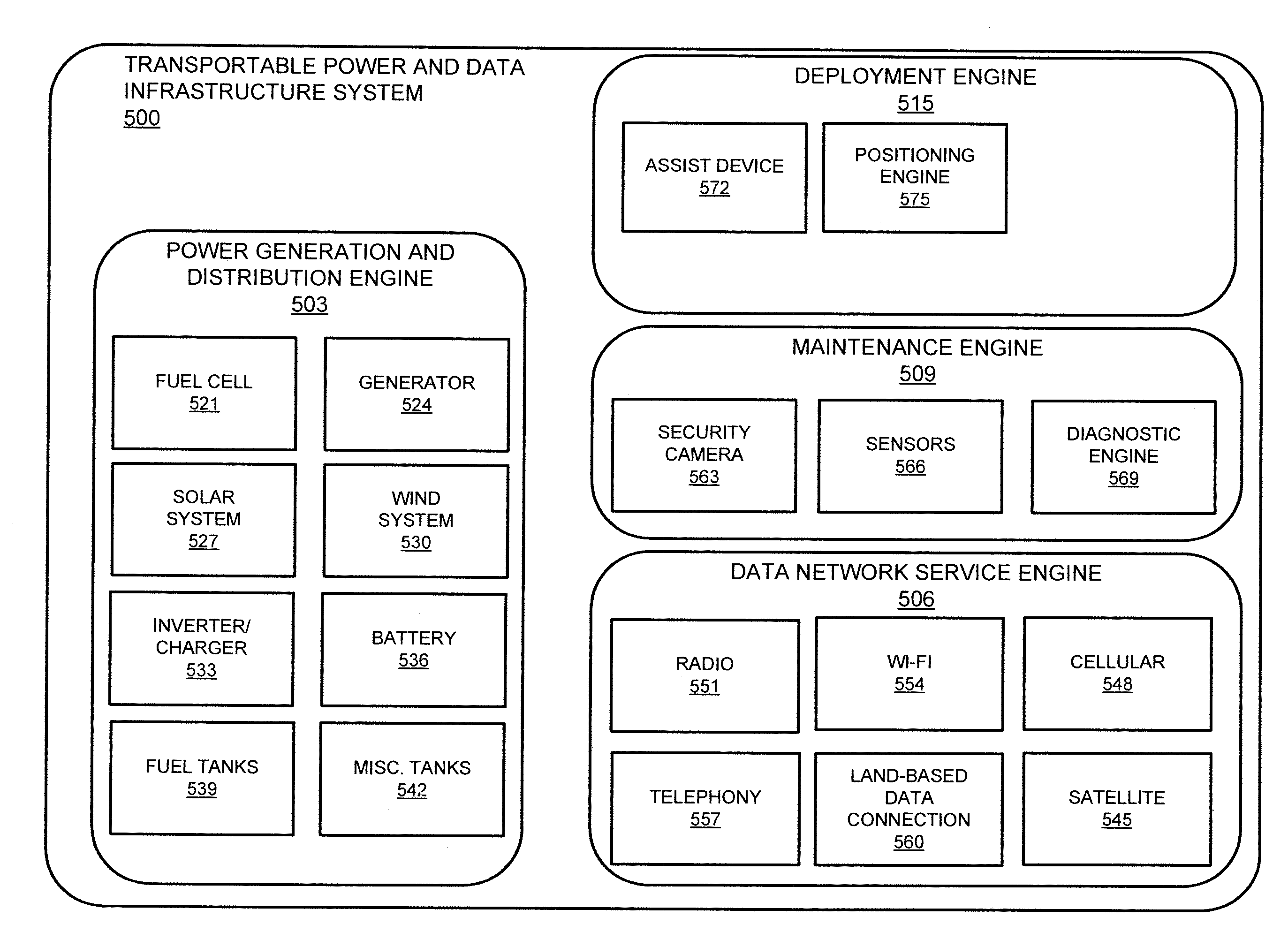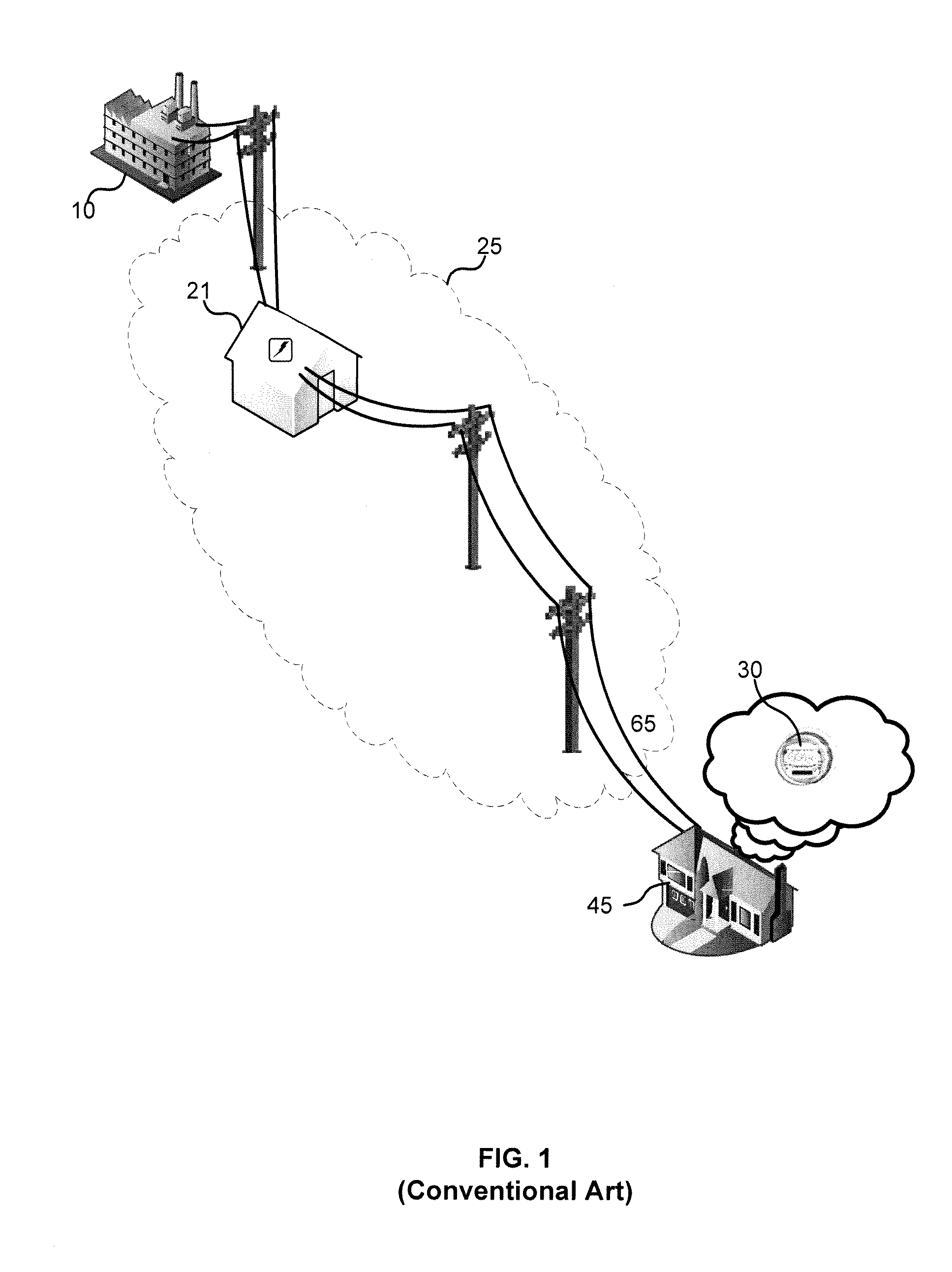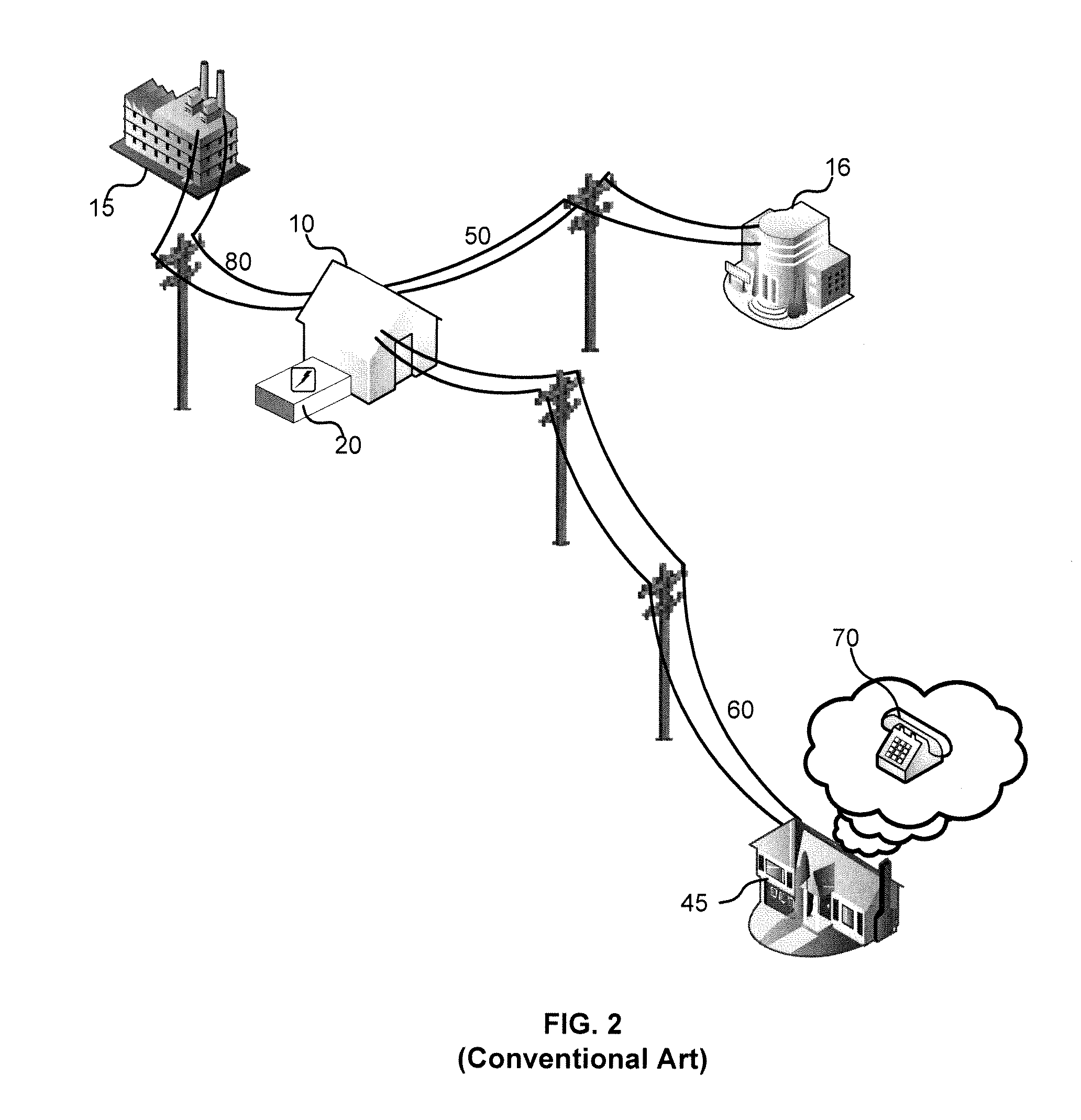[0012]Techniques for providing localized power infrastructure and data infrastructure are disclosed. Some of the following advantages can be achieved using techniques described in this paper: (a) reaching utility customers regardless of whether
utility company infrastructure (e.g., power carrying wires of a power company) can economically reach them; (b) reducing costs of providing power to a dwelling (e.g., house) not yet connected to the
power grid; (c) generating power locally, thereby avoiding power service interruptions due to outages, whether attributed to damaged
power transmission lines or
power demand exceeding supply available on a
power grid; (d) providing a data
network connection locally, thereby avoiding data communications service interruptions due to data network outages or power outages, whether attributed to damaged power or communication lines, or to excess power or data network demand; (e) obviating the need for utility customers to maintain multiple commercial relationships to obtain power and data
network connectivity; (f) assisting utility customers in meeting their
clean energy generation mix requirements or goals; (g) expanding power and data infrastructure to geographic territories that do not have a “shared grid” wired distributions system; (h) fostering competition and enabling
market competition in a local
geographic area having deployed embodiments; (i) allowing for deployment in small increments, thereby avoiding massive capital outlays or years of environmental
impact and
zoning negotiations; and (j) providing more reliable power and data infrastructure in areas having weak power or data infrastructure or low development density.
[0025]Certain embodiments may be configured to utilize an external
power grid, operated by a
third party, concurrently with a power source of the power generation engine when providing generating and distributing power locally. By doing so, some such embodiments, can augment or replace the power provided by the external power grid the power generated by the power generation engine when necessary. For instance, in some embodiments, the maintenance engine of the transportable system is configured to detect
intermittent power shortfalls on the external power grid operated by a
third party power
service provider, and control the power generation engine in order to compensate for the
intermittent power shortfalls. Effectively, such embodiments can buffer power recipients / users from power outages or reductions.
[0028]In order to detect errors in the transportable system, for some embodiments, the maintenance engine is further configured to detect, from the internal operational condition or the external operational environment, an error in the data
network service engine, the power generation engine, or the deployment engine, and alert a systems operator of the error. In other embodiments, the maintenance engine is capable of determining from the internal operational condition or the external operational environment that a current operation of the transportable system or a component thereof exceeds the damage
risk threshold, and in response, alerting a systems operation of the excess. As described herein, the maintenance engine may also attempt to remedy an error detected in the transportable system or component thereof, or to adjust the transportable system or a component thereof to mitigate or eliminate a risk of damage.
[0029]In additional embodiments, the transportable system further comprises: a first transportable module comprising the maintenance engine, the data network service engine, the power generation engine, and the deployment engine; a second transportable module comprising a second maintenance engine, a second data network service engine, a second power generation engine, and a second deployment engine; an interconnect module that interconnects the first transportable module to the second transportable module; and wherein the first transportable module uses the second maintenance engine to augment or redundantly support the maintenance engine, the first transportable module uses the second data network service engine to augment or redundantly support the data network service engine, the first transportable module uses the second power generation engine to augment or redundantly support the power generation engine, or the first transportable module uses the second deployment engine to augment or redundantly support the deployment engine. By using two modules (i.e., a first transportable module and a second transportable module), certain embodiments can provide redundancy in the even that one of the modules partially or completely fails. For example, when the power generation engine of the first transportable module fails, the second power generation engine of the second transportable module can take over the failed engine's load, usually transparently. In another example, when the data network service engine of the first transportable module fails, the second data network service engine of the second transportable module can take over the failed engine's bandwidth, usually transparently.
[0037]In other embodiments, the service enlisted may be to protect the transportable system. In some embodiments, protecting the system may involve reacting to damage risk conditions such as incoming a hailstorm. A service may instruct the transportable system to open a hail umbrella to protect the solar panels. In other embodiments, the system may monitor for and alert the user or service upon detection of such damage risk conditions, thereby enabling the user or service to react by opening the hail umbrella (or other protective measure).
 Login to View More
Login to View More  Login to View More
Login to View More 


